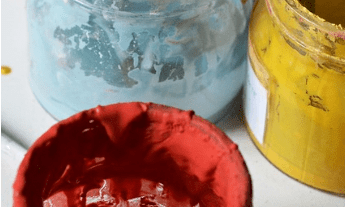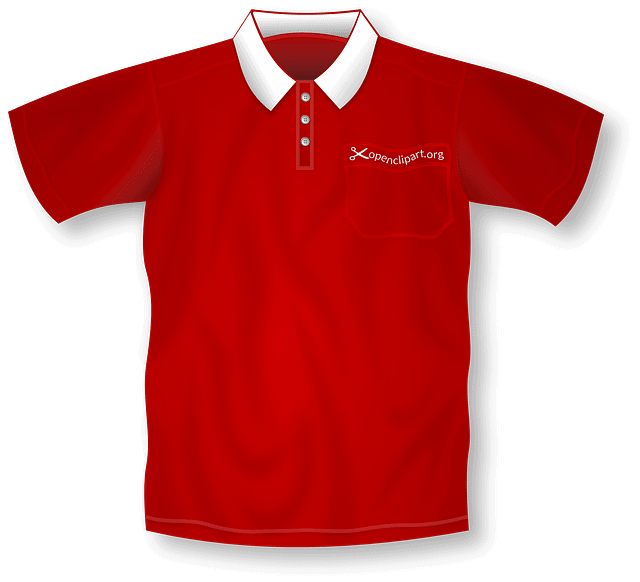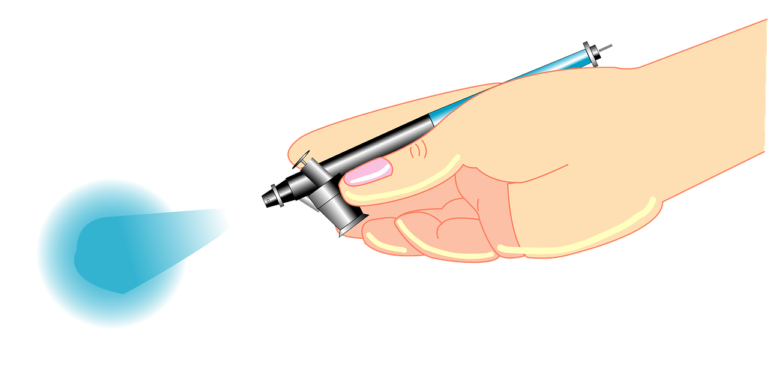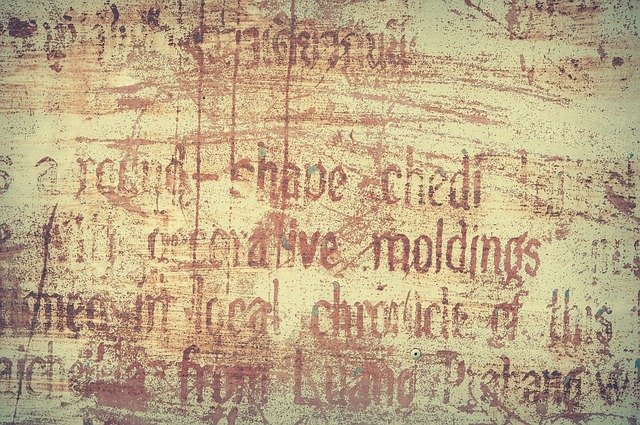How to Remove Spray Paint from Concrete
Cleaning spray paint from concrete may be cumbersome, especially if combined with other dried stains or contaminated materials. Stripping undercoat or single-layer paint is even more challenging.
At times, you may even find yourself dislodging cement particles in the process of paint removal. Could you be facing similar problems or wonder how you can clean old spray paint?

Here’s how to remove spray paint from concrete – using TSP, Graffiti remover, soapy detergent & water, sandblaster, power washer, or paint stripper/thinner. These methods eliminate both wet and dried paint.
However, some oil-stained concrete will need thinning or a solvent oil-soluble to clean the oil-layer before the paint removal process begins.
Alternatively, you can use commercially available spray paint removers such as Motsenbocker’s Lift Off, BHA Easy-Strip, Mothers 07243 California, or Sunnyside. Observe all the safety and precautions during spray paint removal.
Details: How to Remove Spray Paint from Concrete
Method #1: Using TSP Trisodium Phosphate
The use of TSP (trisodium phosphate) is one of the most efficient ways to guarantee a perfect finish if proper procedure is followed.
Material Required
- TSP (liquid or powder form) and warm, clean water
- Stiff bristle brush and hose pipe for outdoors removal
- 1-gallon water bucket and pop or rag for indoors painting removal
- 5-gallon water bucket and protective gear – goggles, face mask, gloves, etc.
Procedure to Follow
- Wear the protective gear
- Wipe the concrete surface to remove dust
- Diluted TSP with clean water
- Dip the brush in TSP solution and scrub the spray-painted concrete
- Leave the wet paint for 20 minutes to quench.
- Rinse the scrubbed area with clean, warm water to remove paint
- Mop the concrete with a rug to dryness
- You can repeat the steps until the spray paint is completely removed.
The TSP breaks down the spray paint molecular bonds forming a thick liquid that is easily washed out with water. But TSP is highly toxic and may be harmful if it runs into water bodies.
Method #2: Using Graffiti remover
Graffiti removers are manufactured with strong ingredients,s which penetrate deeply and break down the paint layer without affecting the concrete structure.
These products are manufactured in forms such as trigger sprayers, aerosol cans, pastes, sponges, liquid solutions, or wipes for optional selection.
Material Required
- Graffiti remover and 1-gallon water bucket
- Scrub brush with stiff bristles and clean, warm water
- Heavy-duty absorbent cloth and garden hose pipe for outdoors painting removal
- Mop/rag and water bucket for indoors painting removal
- Protective gear, e.g., gloves, respirator, overall, goggles, etc.
Procedure to follow
- Wear the protective gear
- Clean the spray-painted concrete with a brush to remove dust
- Mix graffiti remover with warm water in a bucket as per the instructions given in the product
- Soak the brush in the mixture and circularly apply on the painted surface till the entire surface is covered
- Wipe the wet area with a wet cloth or paper towel
- Rinse the cleaned surface with warm water – you can use a horse pipe to clean if it is outdoors painting removal.
- Reap the process until the paint is fully removed. For internal paint removal, mop the surface thoroughly.
NB: This method is best for vertical concrete as it minimizes dripping that may occur during the spray paint removal. Importantly, it is relatively cheaper and efficient as compared to thinner and TSP.
See Also: Remove Paint from Concrete without Chemicals
Method #3: Scrub with Soapy Detergent and Water
The use of soapy detergent and water is the best method for a smaller area. The soap breaks the paint bond during paint removal while the water cleans the residue.
Material Required
- Two 1-gallon water buckets and scrub brush with stiff bristles
- Warm, clean water and mild dish soap/detergent
- Heavy-duty, absorbent paper towels
- Protective gear and garden hose pipe for outdoors
- Mop/rug and bucket for indoors
Procedure to Follow
- Put one protective gear accordingly.
- Clean the spray-painted concrete surface to remove debris
- Mix soapy detergent with warm water in one bucket and stir appropriately
- Pre-wet the painted surface with warm to quench paint molecules
- Dip the brush in the soapy water and scrub the painted area until the paint is removes
- Blot the area with a wet rag or paper towel
- Rinse with warm water to eradicate the paint. use hose pipe for the outdoor paint removal process
This method is easier, non-toxic, and utilizes readily available material though tedious – the paint layer may take a longer time to scrub off.
See Also: Removing Latex Paint from Concrete
Method #4: Using Sand Blaster
A sandblaster machine works by removing the top paint layer on the concrete. Polishing is done gently and keenly to avoid affecting the concrete surface.
But using the sandblast for spray paint removal requires some basic know-how, and thus you might require to get some training. Incorrect usage of the sandblaster could damage the surface and look of your concrete.
Material Required
- Protective gear such as face mask, gloves, and sandblasting suit
- Portable Sandblaster with at least 50 psi rating
- Wet-dry vacuum for indoor or outdoor – or pressure washer for outdoor only
- Sandblasting media material, e.g., fine sandblasting sand
Procedure to Follow
- Wear protective gear well
- Clean the spray-painted area to remove debris
- Switch on the sandblaster and start blasting
- Aim the sandblaster nozzle to and fro the spray-painted area quickly as you move along
- Repeat this process until the entire painted area is clean
- Vacuum the removed paint or use a pressure washer for outdoors painting removal
NB: This method needs a specialist who is conversant with a sandblaster to prevent concrete damage. Moreover, it may be expensive if you do not own a sandblaster too.
See Also: Removing Acrylic Paint from Concrete
Method #5: Using a Power Washer
This method uses high-pressure water mixed with soap (or not) to dislodge the paint layer from the surface. The high-pressure steam is generated by a pressure washer and thus best suited for outdoor spray paint removal.
Material Required
- Protective gear (gloves, respirator, goggles, heavy-duty overall, etc.)
- Electric powered or gas powered pressure washer ranging between 2,000 psi – 3,000 psi.
- Get the right pressure washer nozzle. Check the color-coded nozzles as this shows the force and angle of its water stream.
- I recommend code 15 for your pressure washer nozzle for removing spray paint as it’ll provide more power. Note that the 40-degree nozzle is approved for all-purpose cleaning while the 25-degree nozzle is suitable for regular cleanup jobs.
- Waterproof sheet or cloth/plastic that collects spray drops
Procedure to Follow
- Put on the protective gear
- Assemble the power washer as per the manufacturer’s instructions
- Select the desired nozzle pressure
- Turn on the power washer and start spraying the painted area while standing away
- point back and forth when spraying to remove the pain layers effectively
- You can quench the paint with other chemicals to quicken the removal process
- Run the pray until the entire paint is removed. As a precautionary step, stand about 10 feet away from your spray-painted area.
NB: This method works for both wet and dried paint. However, the surface with fungi and mold may be challenging to clean. Besides, the method is slightly expensive as compare to detergents and TSP.
Method #6: Use Paint Stripper or Thinner
Paint stripper or thinner is a compound known to break down the paint layer into a thick fluid that is easier to wipe out. The solvent, just like vinegar, has a deep penetrative affinity and acts instantly upon application.
Material Required
- A clean rag or clothing – disposable
- Paint stripper or thinner – you can but form amazon.
- Protective attire – gloves, respirator, overall and boots
Procedure to Follow
- Put on the protective attire.
- Clean the painted surface to remove dirt
- Wet the piece of cloth with thinner and apply on the spray-painted area
- Rub the surface gently until the paint is removed
- Use a clean rag to clean the removed paint.
Remember, thinner is irritating. It should be applied in a well-ventilated area if you are carrying out indoor paint removal. You can clean the surface with soapy water for the effective removal of thinner or paint remains – The storage and disposal of thinners solvents must adhere to state laws.
Safety and Precautions to Consider When Removing Spray paints from Concrete
Safety is paramount when carrying out spray paint removal from concrete. Usually, commercially acquired spray paint removers bear instruction labels that you must follow during paint removal.
However, not all have safety rules written; therefore, you will need to follow some of the following precautions when removing spray paint from concrete:
- Wear protective gear during spray paint removal – these include eye protection, gloves, overalls, and boots.
- Avoid smelling spray stripper or thinner as it causes nasal irritation or may choke you. When you get into skin contact with thinner, wash with plenty of clean water.
- Always keep off the fireplace when removing spray paint with thinner or any flammable compound.
- Do not power the sandblaster when switched on – it runs violently and may cause injuries or serious destruction.
- Always keep the power washer within the acceptable psi to prevent the concrete’s dislodging in the process of paint removal.
- Always keep off all spray paint removers away from kids and pets.
Commercial Alternative Removers for Spray Paint from Concrete
The following are some of the commercially available spray paint removers that can be used as suitable substitutes.
1. Motsenbocker’s Lift Off 41101 22OZ Spray Paint and Graffiti Remover
Motsenbocker’s is a water-based spray paint remover that features powerful ingredients that work instantly upon contact. The chemical compound in Motsenbocker’s is bio-degradable (no pollution) and won’t irritate your skin upon contact.
Motsenbocker’s comes with a classic spray gun and simple pull trigger that allows point application during spray paint removal. The solvent works effectively without removing concrete cement.
You can remove graffiti and other stains such as oil stains, molds, or animal stains without much problem. Notably, Motsenbocker’s is highly portable and self-activating.
2. BHA Easy-Strip
BHA Strip is an abrasive design paint removal that features finely packed brush leave that integrates extra coarse silicon carbide abrasive grains – durable.
The wide range diameter (4-1/2 inch paint stripper drum) allows simple clamping during paint removal without much hassle. Indeed, the product is self-locking and delivers excellent abrasion grip during paint removal without spinning.
BHA Strip is lightweight and durable. Its unique back filler design allows fine polishing. This product can also be used in Weld Cleaning, Body Filler, Removing Rust, Bondo, or Sealant.
3. Sunnyside Corporation 65664 Paint & Varnish Remover
Sunnyside is solvent type spray paint remover that features strong, quick-acting natural agents, which break paint molecular bonds instantly upon applications.
Sunnyside is convenient to use and comes with a non-drip formula that allows horizontal applications without runs. This compound is packed in a large container (wide coverage) that is highly portable and easier to refill.
Besides, Sunnyside integrates high penetrant substrates that break thick layers sufficiently. Moreover, this solvent is non-flammable and works for both oil & water-based paint during removal.
How to Paint Concrete
During the paint application process, you will need to follow the procedure highlighted below to achieve an excellent finish.
- Select the right paint for concrete application
- Prepare the paint well as per the manufacturer’s advice.
- Clean the concrete surface (with a brush) to remove dirt and debris before painting starts
- Apply the primer or undercoat when to seal the gaps for the fresh concrete surface
- Apply finish gently and leave for 1 to 3 hours to cure before applying the final coating
- Avoid sanding the final finish or wiping with a piece of cloth.
NB: Always consider the weather condition before you begin paint application. Otherwise, it may end up being washed down or affected by certain weather conditions.
See Also: Great Concrete Rust Remover
Conclusion
You can remove spray paint efficiently from concrete by using TSP, Graffiti remover, soapy detergent & water, sandblaster, power washer, or paint stripper/thinner.
Alternatively, you can purchase commercially available spray paint removers such as Motsenbocker’s or Sunnyside if other highlighted options don’t suit you.
You will also need to follow the right procedure highlighted in this article during application and adhere to a safer spray paint removal process. Go for the method that you are comfortable and conversant with during spray paint removal.





